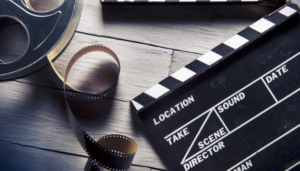
Over the past seven years, the number of foreign citizens legally residing in Portugal has increased almost fourfold. According to Agência para a Integração, Migrações e Asilo (AIMA), by the end of 2024, there were about 1,543,697 foreign residents registered in the country, while in 2017, this figure was about 421,802 people.
Foreign citizens now account for approximately 15% of Portugal‘s population, confirming the accelerated growth of migration in this country.
According to AIMA, the majority of foreign residents are citizens of Brazil (approximately 31.4%), India (approximately 7.4%), Angola (approximately 6.9%), and Ukraine (approximately 5.9%). Most migrants are of working age: 77% are between 18 and 44 years old, and 56.1% are men. However, no direct official breakdown by nationality has been found in open sources — these data require additional verification.
Portugal is considered one of the most immigrant-friendly countries in the EU — it has a Golden Visa program that requires an investment of €250,000 and grants the right to a residence permit and then citizenship. There are other categories as well: the D2 business visa, visas for digital nomads, and financially independent individuals.
Meanwhile, the sharp increase in the number of applications is putting a strain on AIMA: the agency reports a shortage of staff, a significant backlog of unprocessed cases, and delays in processing applications. A number of media outlets report that some cases have been pending for over two years.
The growth in the number of foreign residents in Portugal reflects a changing demographic landscape and makes the country attractive to international investors, start-ups, and migrant workers.
Key factors include relatively low investment thresholds, openness to foreign specialists, and a favorable climate. However, this dynamic is accompanied by growing challenges: increased pressure on the housing market, social infrastructure, and a migration management system in need of modernization.
For businesses, this is a signal that Portugal is a promising market for relocation and the creation of international teams, but it is important to take into account bureaucratic delays and changes in migration policy.

TK-Home Textiles, part of the Textile-Contact Group (TK Group), has begun its first deliveries of products to Romania, according to the group’s owner, Alexander Sokolovsky.
“Romania has been added to the list of countries with which we currently have stable contracts for the export of finished products (namely Denmark, Germany, Lithuania, Latvia, Georgia, and France), and today we sent the first shipment of our own products there,” he wrote on Facebook on Monday.
Sokolovsky specified that so far these are only various sets of bed linen made of satin, calico, and flannel, made from 100% cotton produced by the TK-Chernigov factory.
“However, we plan to significantly expand the range for this customer in the future. Each new country is further confirmation that Ukrainian textiles have a worthy place in the European market,” he added.
The owner of the group also announced that TK-Domashniy Tekstil had won the Best Exporter of the Year competition for the second year in a row based on its performance in 2024 in the field of textile production, clothing, leather, leather goods, and other materials.
“I would like to thank the team, which in such difficult times, despite all the challenges, is not just holding on, but is looking for any opportunities to grow sales markets and increase the share of exports in our order portfolio,” Sokolovsky wrote.
TK-Domashniy Tekstil is a leader in the production of fabrics, home textiles, and children’s products in Ukraine. Its asset portfolio includes one of the few finishing factories in Ukraine that produces cotton fabrics in
Chernihiv, TK-DT Chernihiv. Its assets also include garment factories in Kyiv, Ternopil, Chernihiv, and Odesa; a shoe factory in Chyhyryn; a knitting factory; and a synthetic winterizer factory in Chernihiv.
TK Group was founded in 1995. It currently represents a holding company that combines the entire range of services in the textile industry, from raw materials and threads to ready-made solutions for B2B, B2G, and B2C customers.
The group consists of 13 factories and employs about 1,500 people.

PJSC Ukrainian Graphite (Ukrgraphite, Zaporizhia) intends to conclude an agreement to supply graphite products to the UK by the end of the year worth up to EUR50 million.
According to the company, the board of directors of Ukrgraphite has decided to “conclude a foreign economic contract for the supply of graphite products with CARBON CONSTRUCTION & TRADING LIMITED, Edinburgh, UK, valid until December 31, 2025, unless a longer term is agreed with the counterparty, for an amount not exceeding €50 million.” Edinburgh, United Kingdom, valid until December 31, 2025, unless a longer term is agreed with the counterparty, for an amount not exceeding EUR 50 million or its equivalent in the national currency of Ukraine or US dollars.”
It is specified that such plans were approved based on the decision of the general meeting of shareholders to give preliminary consent to the company’s board of directors to perform significant transactions regarding the conclusion of agreements, deals, and contracts with the relevant counterparty.
In accordance with the law, the market value of the property or services that are the subject of the transaction is UAH 2 billion 427.510 million.
The value of the issuer’s assets, according to the latest annual financial statements, is UAH 4 billion 384.136 million.
Eight of the nine elected members participated in the board of directors meeting and voted unanimously.
Ukrgrafit is a leading Ukrainian manufacturer of graphite electrodes for electric steel melting, ore-thermal, and other types of electric furnaces, commercial carbon masses for Soderberg electrodes, and carbon-based refractory materials for metallurgical, machine-building, chemical, and other industrial complexes.
According to the National Depository of Ukraine (NDU) for the first quarter of 2025, Intergraphite Holdings Company Limited (Malta) owns 23.9841% of the private joint-stock company, and C6 Safe Group Limited (Cyprus) owns 72.0394%.
The authorized capital of the private joint-stock company is UAH 233.959 million, and the nominal value of a share is UAH 3.35.

The leaders of the Ukrainian insurance market in terms of premiums collected in January-September 2025 were the insurance companies SG TAS – UAH 5.717 billion (UAH 3.474 billion in the first nine months of 2024), ARKS – UAH 4.238 billion (UAH 3.150 billion), INGO – UAH 3.830 billion (UAH 2.462 billion), VUSO Insurance Company – UAH 3.728 billion (UAH 2.860 billion), and Unica – UAH 3.572 billion (UAH 2.564 billion), according to data from the PRIMA information exchange project of the National Association of Insurers of Ukraine (NAIU).
Changes in the top five for the specified period compared to the same period last year affected SK INGO, which rose from fifth to third place, swapping places with SK Unica.
According to the association’s website, the top five leaders in terms of premiums collected in the compulsory motor third-party liability insurance market have also changed, and after nine months, the leaders are TAS Insurance Company with UAH 2.958 billion (compared to UAH 1.049 billion in the same period of 2024), Oranta with UAH 2.206 billion (UAH 1.004 billion), Knyazha VIG with UAH 1.807 billion (UAH 764.9 million), INGO with UAH 948.2 million, and USG with UAH 831.1 million, pushing PZU Ukraine and VUSO out of the top five PZU Ukraine and VUSO, respectively.
Similarly insignificant changes in the comparable periods occurred in the Green Card market, where the top five remained unchanged: TAS – UAH 960.5 million (UAH 1.025 billion), USG – UAH 828.7 million (UAH 553.7 million), PZU with UAH 659.2 million (UAH 411 million), and Knyazha VIG with UAH 286.4 million (UAH 475.5 million), which switched places, and VUSO Insurance Company – UAH 208.5 million instead of Oranta, which ceded fifth place in this type of insurance.
Similarly, in the CASCO market: as before, it is led by ARKS Insurance Company – UAH 2.057 billion (UAH 1.737 billion), Arsenal Insurance – UAH 1.940 billion (UAH 1.416 billion), VUSO with UAH 955.2 million (UAH 720.4 million) and Unica with UAH 890 million (UAH 826.7 million), which switched places, and Universal with UAH 839.8 million instead of USG.
The former top five also retained their leadership in voluntary medical insurance: Unica Insurance Company – UAH 1.602 billion (UAH 1.193 billion), followed by VUSO Insurance Company – UAH 887.4 million (UAH 603.2 million), Insurance Company Universalna – UAH 866.4 million (UAH 615.8 million), Insurance Company INGO – UAH 780 million (UAH 525.4 million), and Insurance Group TAS – UAH 652.9 million (UAH 405.7 million).
As reported, as of October 1, 2025, there were 50 risk insurers operating in the Ukrainian insurance market (58 on the same date a year earlier), 10 specializing in life insurance (11), and one with special status (Export Credit Agency, ECA).
INGO, INSURANCE MARKET, LEADER, PREMIUM, TAS, UNICA, VUSO, АРКС

171 enterprises and communities from 14 regions of Ukraine have used the simplified procedure for changing the designated use of agricultural land to industrial and energy land for the construction of new enterprises and power plants. This was announced at the Kyiv International Economic Forum by Dmytro Kysylevskyi, Deputy Head of the Verkhovna Rada Committee on Economic Development. He is the author of the law that reduced the duration of changing the designated land use from 1–3 years to 1.5 months.
Decisions to change the designated purpose of land under the simplified procedure have been adopted for the construction of production and warehouse facilities (75 plots), production of energy from renewable sources (42 plots), industrial production and industrial parks (26 plots), and other facilities (28 plots). The highest number of positive decisions was adopted in Kyiv, Zakarpattia, Rivne, Zhytomyr and Kirovohrad regions. No positive decision has yet been adopted in Sumy, Donetsk, Zaporizhzhia, Ivano-Frankivsk, Luhansk, Odesa, Kharkiv, Kherson, Khmelnytskyi, and Cherkasy regions.
In total, under the simplified procedure, the designated use of land has been changed from agricultural to industrial and energy use for plots with a combined area of 1,050 hectares. Of these:
434 ha – production of energy from renewable sources
385 ha – production and warehouse facilities
121 ha – industrial production and industrial parks
110 ha – other.
“Land purchase and the subsequent change of its designated use for a long time was one of the most time-consuming and corruption-prone stages of making investments in industry and energy. On average, this simple procedure in essence used to take 2–3 years of bureaucracy, corruption, and humiliation of entrepreneurs. Now the situation has changed. The simplified procedure takes 1.5–2 months, and it allows saving time and money when launching new production. But most importantly, investors who dare to build industrial or energy facilities during the war feel a better attitude from the state,” noted Dmytro Kysylevskyi.
The simplified procedure for changing the designated use of land plots applies to agricultural land outside populated areas, where no urban planning documentation has been developed, for the placement of facilities in industry and energy defined by law:
Industrial buildings and warehouses
Pipelines, utilities, and power transmission lines (excluding main oil pipelines and main gas pipelines)
Complex industrial structures (excluding enterprises and facilities for the enrichment and processing of nuclear materials; facilities and furnaces for waste incineration; nuclear power plants)
Buildings for agricultural purposes, forestry, and fisheries.

The 2026 budget proposes to allocate UAH 4 billion to the production of Ukrainian films, according to Yevheniia Kravchuk, deputy chair of the parliamentary committee on humanitarian and information policy (Servant of the People faction).
“Next year, as part of the Ukrainian president’s ”1,000 Hours of Ukrainian Content” program, the state budget will finance the production of domestic content for all age groups. It is proposed to allocate UAH 4 billion for this purpose… This includes feature films, documentaries, cartoons, and the production of YouTube videos,” Kravchuk was quoted as saying by the press service of the Verkhovna Rada.
According to her, content for children has been allocated to a separate category, where the state will finance 100% of production.
“This refers not only to cartoons as such, but also to content for social networks, because children, especially teenagers, have a completely different content consumption structure. They watch videos on YouTube or short clips on social networks, and products will be created for them that will tell them about history and certain works of school literature, but everything will be presented in an interesting way. This is also necessary,” the MP emphasized.
She also noted that the Committee on Humanitarian and Information Policy has proposed that the Ministry of Culture and Strategic Communications add translations of popular games into Ukrainian to the list.